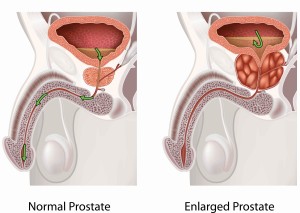
Benign prostatic hyperplasia ( BPH) is a condition which affects millions of men from the age of 30. This condition causes the prostate to enlarge in a noncancerous way. When the prostate creates pressure of the urethra (the tube that you pass urine through) it can cause bothersome urinary symptoms.
The following symptoms may occur:
Up to 25% of men with BPH will need to seek treatment because of significant symptoms which are impacting on their quality of life.
As a first step, patients may be prescribed medication such as Prazosin or Tamsulosin to relax the smooth muscle at the bladder neck and within the prostate. Some men cannot tolerate these medications because of the side-effects which include dizziness, headaches, and sexual dysfunction. Over time symptoms may return and medications may prove ineffective.
Another type of medication, five alpha reductase inhibitors, will gradually shrink the prostate over time. This may help some patients to avoid surgery or the complications of BPH such as urinary retention. The side-effects of these medications can include breast swelling and sexual dysfunction. Concerns have been raised about an association with an increased risk of diagnosis of high grade prostate cancer over time in patients on five alpha reductase inhibitors but this is not widely agreed upon.
Once the catheter is removed there is a period of a few weeks with there will be discomfort passing urine and occasional blood is seen. This procedure produces a good channel through the prostate which allows for relief of obstruction. Some bleeding is common after the procedure as is ‘retrograde ejaculation’ or dry orgasms. Problems postoperatively are rare but may include incontinence, impotence, and urethral scarring.
Water Vapor Therapy is a minimally invasive procedure that uses the natural energy stored in a few drops of water to treat the excess prostate tissue causing BPH symptoms. Click this link for more information about Water Vapor Therapy.
Detailed patient information can be found here.